Storyboarding to generate a science newsletter
Bill Dennison ·As part of the Healthy Waterways Alliance launch in Mackay, Queensland, a science newsletter was drafted as part of a Science Communication Workshop. The process of taking a group of people from varied backgrounds through a storyboard exercise is broken down into components and explained as a) workshop preparation, b) workshop introduction, c) an activity known as 'conceptionary', d) working group tasks, e) storyboarding exercise, f) initial draft, g) soliciting broader inputs, and h) finalizing newsletter.
a) Workshop preparation: Securing the right sort of space, carefully selecting participants and bringing the essential supplies and equipment needs to be accomplished prior to the workshop. In the Mackay workshop, Sal Gray was instrumental in securing a teaching lab on the campus of Central Queensland University, Mackay which had a data projector, a hard copy projector, a large whiteboard, chairs and tables. The people selected included various people associated with the Healthy Waterways Alliance who could represent local councils, state agencies and academia in each of their 'think tanks': agriculture, urban and ecosystem/water quality. The supplies for the workshop included a set of multi-colored whiteboard pens, erasers, flip charts, a large map of the region, example science communication products like books and newsletters, colored pencils for Conceptionary, blank paper for Conceptionary, relevant Conceptionary cards, and a small 'point and shoot' camera with download cable.
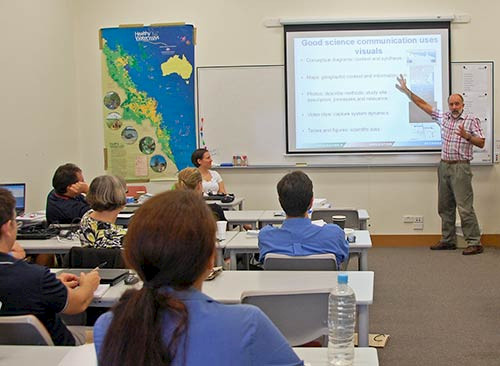
b) Workshop introduction: The first task is to have everyone introduce themselves so that everyone has a sense of who else is on the room. Two short PowerPoint presentations introduce the principles of science communication and conceptual diagrams. The final slide of the slide of the second PowerPoint introduces Conceptionary. The key messages of the introduction are defining what science communication is and is not, providing examples and overall principles of good science communication , and introducing conceptual diagrams. It is important to keep the introductory PowerPoint talks brief and move quickly into Conceptionary.
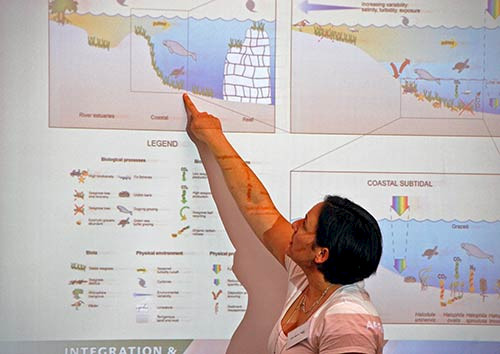
c) Conceptionary: A previous blog post describes this activity in detail. An example Conceptionary drawing is done for the entire group at the outset. We usually provide small prizes for the best conceptual drawing of each round (some promotional items or nibbles) and try to start with the easiest and end with the most difficult themes. When Conceptionary is used within the context of a storyboard session, the four themes which teams compete with each other were selected from the Healthy Waterways Alliance description. This created some graphical ideas to select from and incorporate into the conceptual diagram component of the storyboard in the working group phase of the storyboarding session.
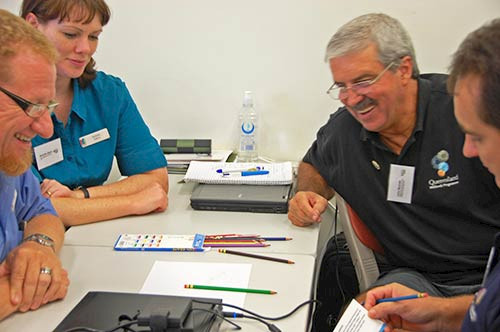
d) Working group tasks: The group was divided into three smaller working groups to undertake the following tasks; generate titles and subtitles for the newsletter, draft conceptual diagram(s) to be used in the newsletter, and list the key messages to be conveyed in the newsletter, which could be converted into text of appropriate length and reading level (depending on the audience). Each working group used flip charts to generate their components for feedback in the storyboard plenary.
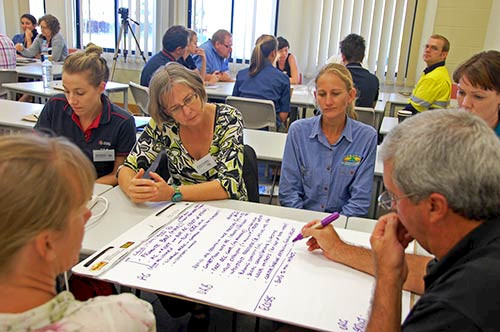
e) Storyboarding exercise: This session brings the working groups together to provide a short report to the entire group. The various titles, subtitles, graphic elements and key messages are integrated in a storyboard layout using the whiteboard. The session starts with large blank rectangular boxes drawn on the whiteboard, representing the 'limited real estate' available. The various elements that the working groups have have reported to the group are used to populate the layout. The front page attempts to have an attention grabbing title and visual(s), the middle two pages can be integrated and deliver the most content, and the back page typically includes logos, acknowledgements, references, participant information and synthetic statements or graphics and recommendations.
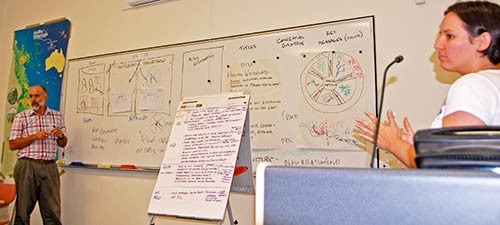
f) Initial draft: The initial draft is produced as soon after the workshop as possible with a small group. We typically try to have two half days instead of one full day, in order that we have an evening to generate the initial draft. The initial draft uses bullet points or Latin text to provide the word counts needed and help with the layout. The Science Communicator converts the hand drawn conceptional diagrams into Adobe Illustrator versions with legends. In addition, nominal photographs, maps or graphs of whatever resolution is available are inserted to complete the initial complete draft. As part of the multiple day process in Mackay, the recommendations section for page four was intentionally left blank for the facilitated session as part of the launch activities.
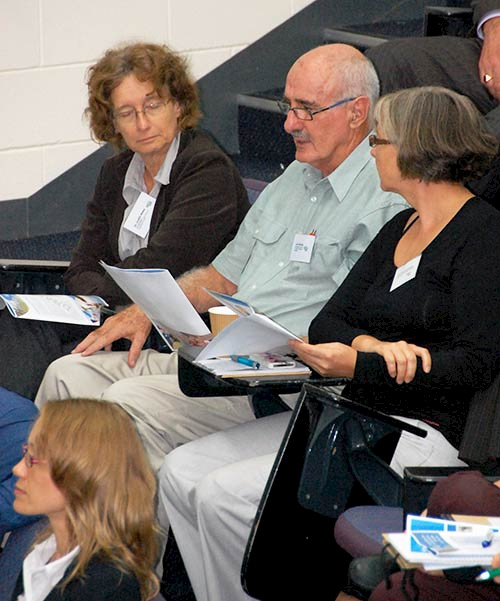
g) Soliciting broader inputs: The approach we take in drafting science communication products is to start with small, focused groups and then progressively broaden the group through subsequent revisions. In the Mackay example, the afternoon session of the launch was identified as the opportunity to give people the initial draft newsletter and then solicit their input, with a focus on page four recommendations. We distributed hard copies and encouraged people to draw on their copies with edits or suggestions. A subtle cue is that we are looking for constructive criticisms, like alternative text (rather than more text that we cannot fit into the 'limited real estate'), or alternative photographs.
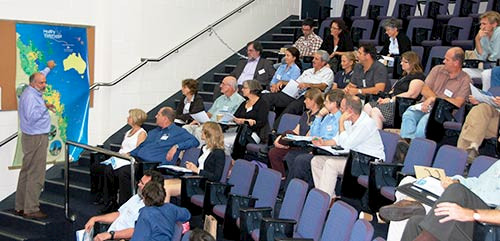
h) Finalizing newsletter: This stage of the newsletter can take days, weeks or months, depending on the group involved. While a couple of weeks may be optimal in terms of timeliness and completeness, the collaborative process of working together on the final product may mean that a couple of months to conduct several rounds of editing and reviewing may be desirable. Too long an interval will cause participants to forget what was agreed upon and lead to disagreements as to the intent and focus of the newsletter and too snort an interval could lead to a lack of consensus and unnecessary mistakes.
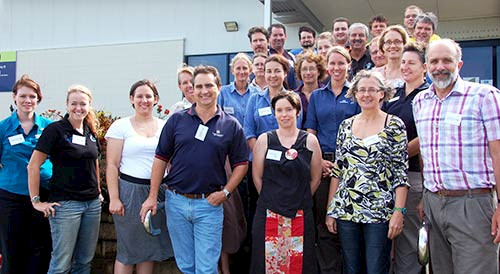
About the author
Bill Dennison

Dr. Bill Dennison is a Professor of Marine Science and Vice President for Science Application at the University of Maryland Center for Environmental Science.

